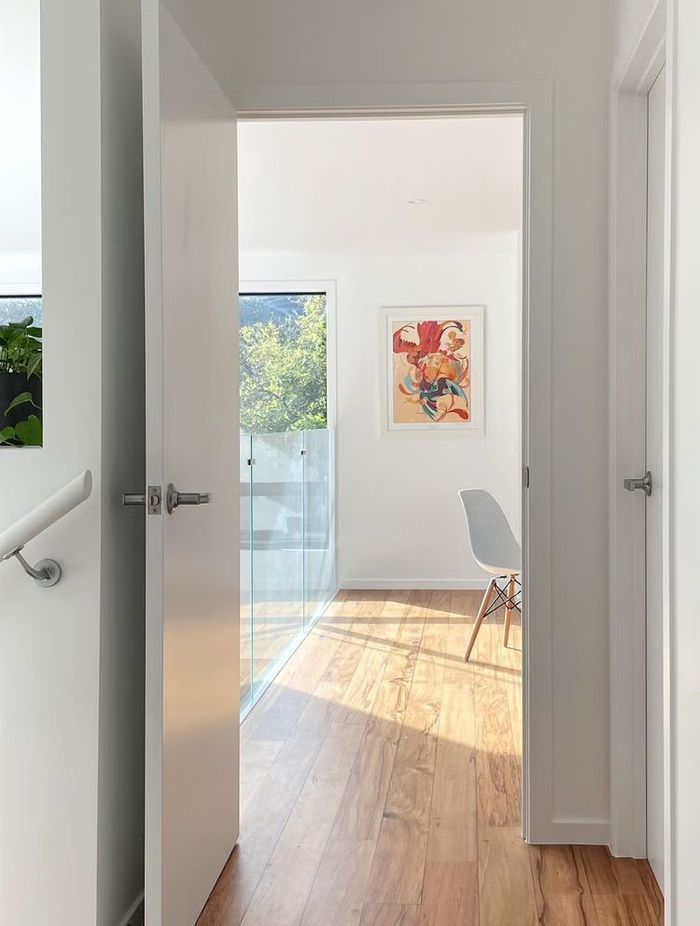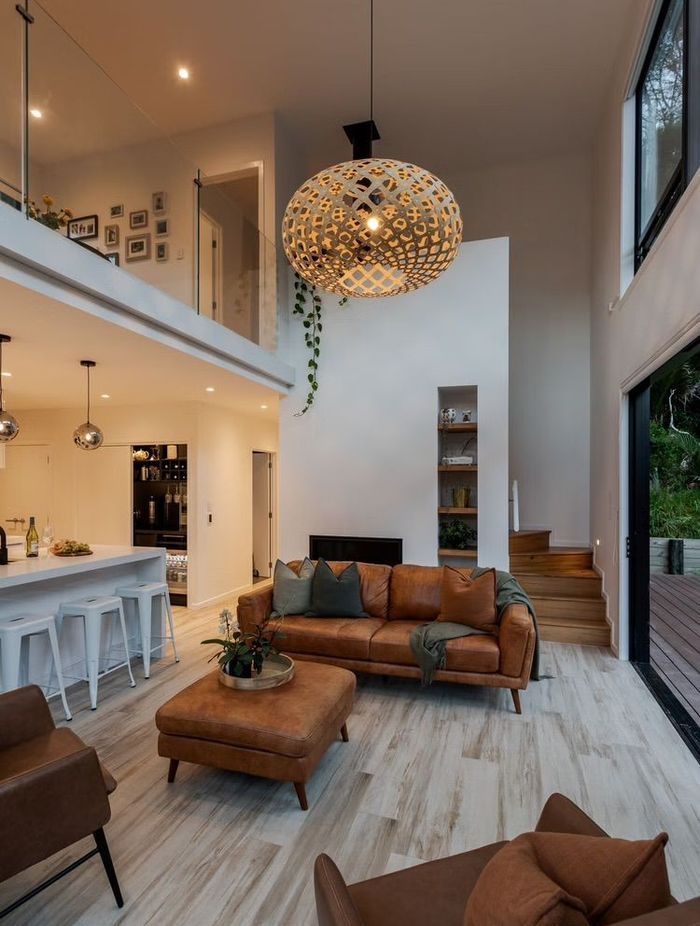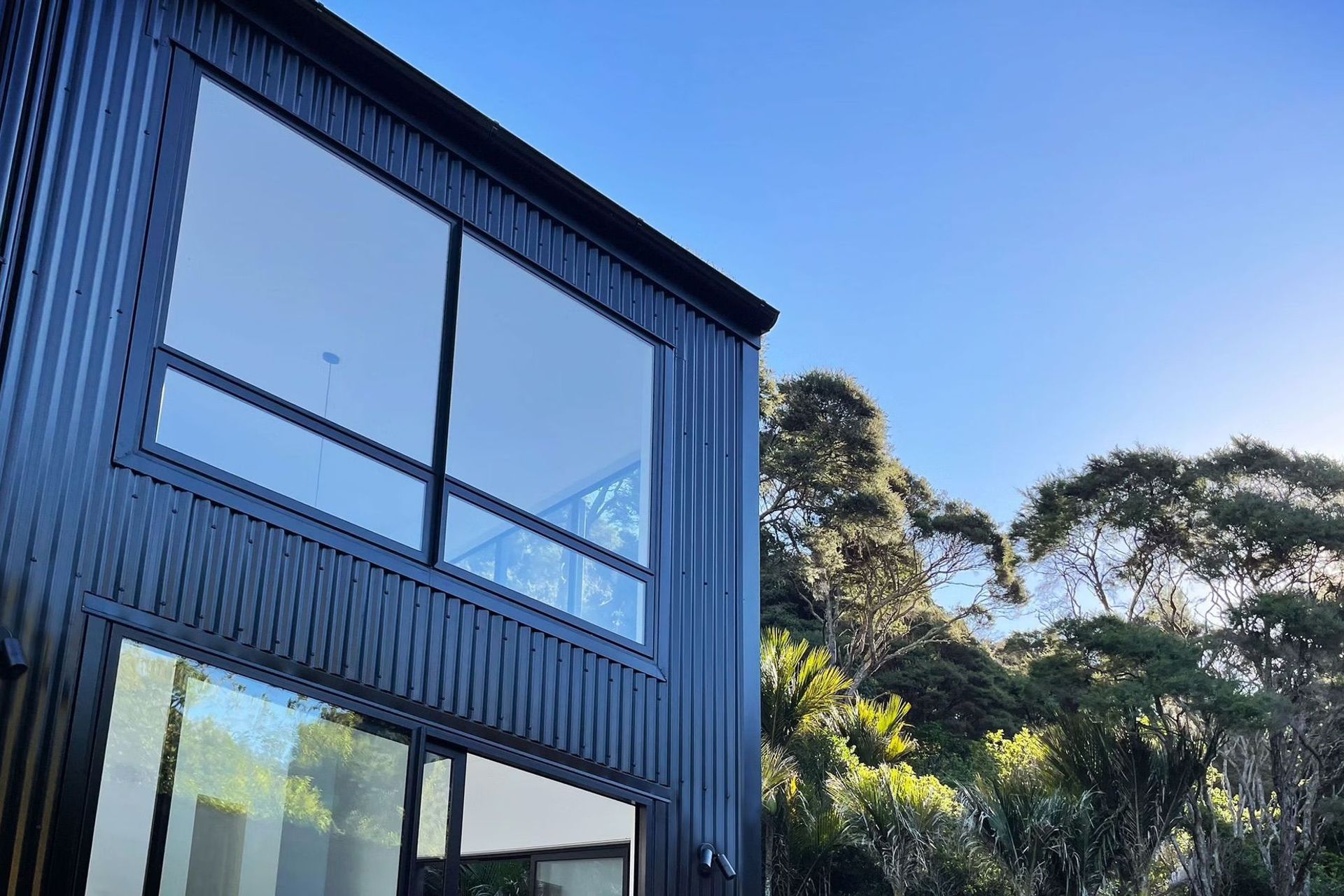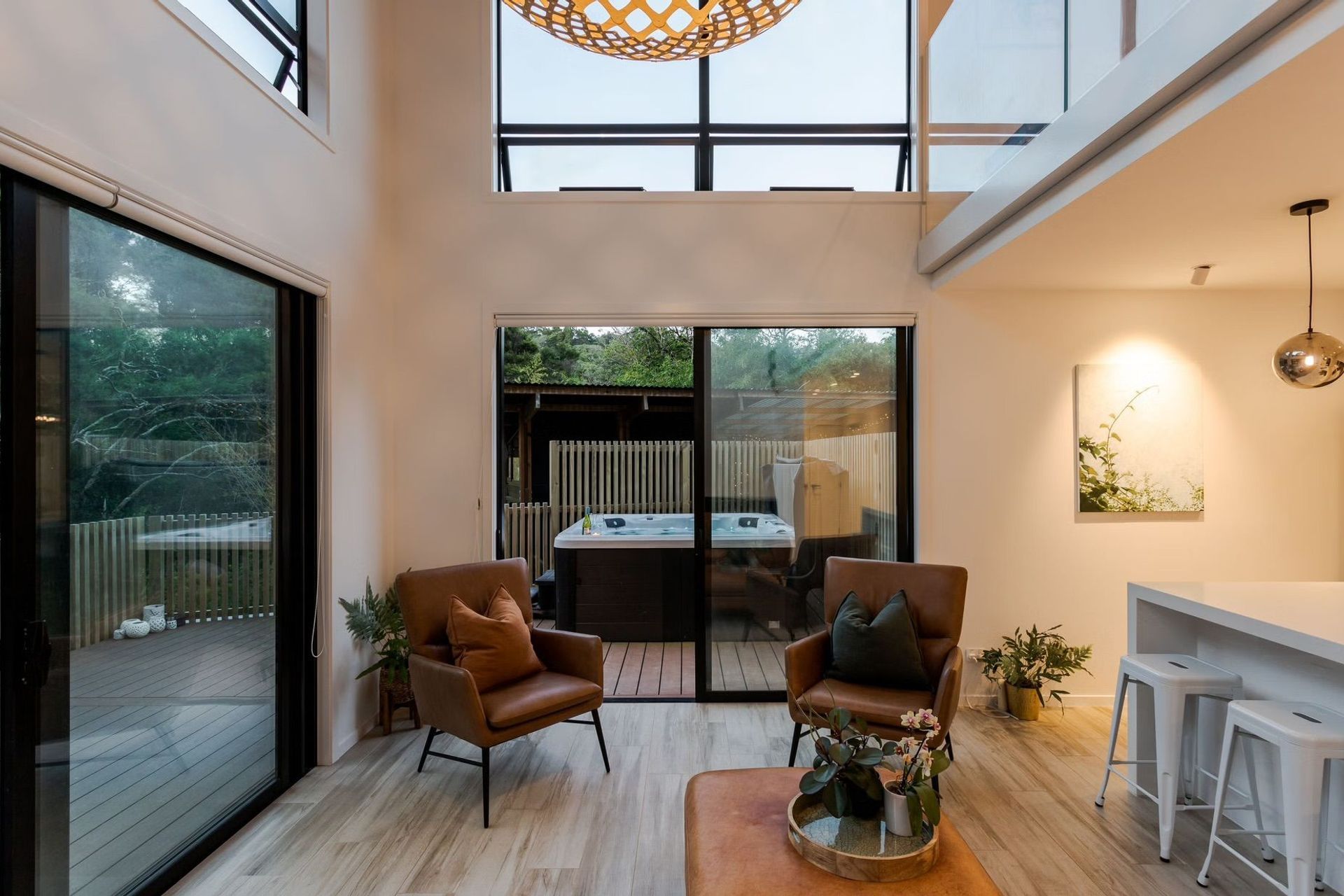Architect shares expert advice for a smooth, stress-free first home build
Written by
11 November 2023
•
5 min read

Titirangi House was a deeply personal project for Brendan Scott-Woods for two reasons. After working for other architectural practices for 20 years, Brendan left to start Arcform, designing Titirangi House as one of his first independent projects. It was also his first time playing the role of architect and client, as Titirangi House would become his home.
While Brendan is no stranger to designing homes, he wasn’t quite expecting the rollercoaster of challenges the Titirangi project would throw his way. From navigating a difficult site to the complexity of building during Covid-19 lockdowns, Brendan has come away from the build with a long list of learnings — eager to share his experience in the hope that it will help other first home builders start their journey more prepared.
“The foundation of a successful project comes down to selecting a good builder,” he says. “My advice is to choose an experienced professional who not only comprehends intricate designs, but also possesses the ability to read and interpret plans with precision. A skilled builder is essential for turning your vision into reality.”

Investing time in thorough pre-construction discussions is crucial to ensure your builder fully grasps the design intent and rationale. Going over the plans in detail and answering any questions will help to prevent misunderstandings and discrepancies during the build, and it’s also a great way to guarantee you have a shared vision for the project.
“The next step, before any construction starts, is to ensure the site is prepared for the build early.”
“Challenging sites often come with specific obstacles such as uneven terrain, drainage issues, or unstable soil. Initiating site preparation well in advance allows you to address these challenges and create a stable foundation for your home,” he advises.
Brendan’s Titirangi site is located at the base of a very steep driveway, and when first purchased, was covered in weeds and gorse. “There was also a large Manuka stump hidden below the ground that was not picked up during the geotechnical investigation,” he explains. “It needed to be removed, which was a challenge as we had already started work on the property at the time.”
A small clearing for a dwelling had been confined by an existing stormwater easement and an adjacent property that had side boundary rules of six metre setbacks. “It didn’t leave much room for a house, which meant the floor plan ended up being quite compact, but we added a nice double height space so as to not feel too restrictive,” says Brendan.


Brendan’s inspiration for the material palette was simple, using traditional New Zealand materials such as corrugated iron to create a high-contrast black exterior, while the inside was kept pared back with white walls and recycled rimu floors to soften the starkness. Due to the site’s steep driveway, material deliveries were an unexpected challenge.
“Having a delivery truck turn back because they’re scared of a steep slope is really frustrating,” he says. “My advice is to ensure the material deliveries are coordinated and drivers are able to handle difficult access by sending photos and clear instructions beforehand.”
Developing a realistic project timeline and schedule that factors in things like delivery delays, bad weather, unforeseen challenges, and regulatory processes will save a lot of hassle down the line. “With a well-structured timeline you’re able to manage expectations and ensure a smoother project flow.”
Building neighbourly relations is another key step to ensure a smooth build process, Brendan explains. “The construction process involves numerous deliveries, noise, and disruptions, so establishing a good relationship with your neighbours is essential. Open communication and collaboration can help minimise inconveniences and foster a positive atmosphere throughout the project.”
“When navigating these challenges you just have to keep going and push through. I once spent a weekend carting timber down the drive after a delivery driver dropped the delivery up on the road because he couldn’t handle the steep drive. Another driver hit our neighbour’s house –– fortunately we have a great relationship with them!”



Regularly monitoring the progress of work and the quality of materials used is vital, he adds. “A conscientious builder will not only protect the work they have completed, but also maintain a clean and organised site. This attention to detail ensures a smooth construction process and a high-quality end result.”
“Designing and building a new house is a multifaceted undertaking that requires a combination of creativity, planning, and communication,” Brendan says.
Setting up regular meetings to discuss upcoming project stages, monitoring products used to ensure they are the correct ones, and taking time to go through the project details with the builder and subcontractors to explain the rationale are great ways to safeguard your project.
“I would also advise breaking payments down into clear stages and releasing funds once those stages have been completed to keep your finances running smoothly.
“Don’t delay applying for your Code Compliance Certificate, book your final inspection, and accept if the council suggests a few things — it’s worth it.”
Having completed his first build as a client, Brendan hopes that by sharing his experience he can help other first home builders make the right decisions when embarking on their build journey.
“There are so many things to consider when designing and building a quality home. I’m always available to have a chat with anyone who has any questions about the process, so please feel free to get in touch.”
Learn more about Arcform.